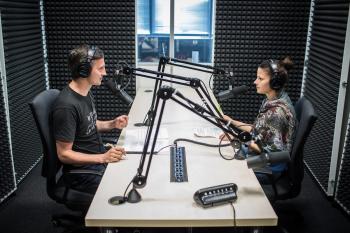Users Who Spiked

TPMI REFINES TARGETING CAPABILITIES OF IVAS THROUGH SOUND DETECTION AND VISUALIZATION
Private Notes
Private Notes
Notes
Detecting potential threats in time can be the difference between life and death during a high-threat military operation. The United States Army is soon to rely on advanced and highly sophisticated IVAS headsets using 3D image rendering and visual technology to boost combat effectiveness.
The soldiers are trained, educated, and informed on various combat techniques and strategies throughout their time in the army. However, the acceptance of certain military technologies can play a significant role in preserving operational effectiveness while ensuring soldier safety.
Using the IVAS, the United States Army aims to provide soldiers with better targeting capabilities and enhanced visual identification features that help take out enemies from afar with greater effectiveness. The use of IVAS and its novel technologies that are still in development – although a lot of major updates are seemingly on the way – also improves soldier mobility and navigation during strict surveillance and reconnaissance missions.
TPMI, also known as Tipping Point Military Innovation LLC, is a cutting-edge military technology developing firm based in Orlando, Florida. The company is using its high-tech and cutting-edge innovation techniques to create massive upgrades for the IVAS system.
Currently the company and its author, Robert Douglas who is a West Point graduate and Vietnam War veteran, have over 80 USPTO patented military innovations designed specifically for the IVAS headset. These technologies have undergone substantial investments and research processes, considered ready for prototyping with active IVAS units at PEO Soldier fielding and testing facilities.
TPMI refined the targeting capabilities of the IVAS through one of its major upgrades. The patented technology, noted as US Patent 10,846,911, provides the necessary features and algorithm framework for the IVAS to pinpoint sound sources, especially during intense combat situations.
The IVAS with the '911 technology will have better visual and audio source localization capabilities that will readily enhance targeting precision and automatic target acquisition. This is crucial for stealth and reconnaissance operations as both require accurate information about the location and source of threats, hazards, and personnel.
The use of audio source localization will create a visual tag and easily identifiable 3D objects on the head display of soldiers. 3D volume rendering and pseudo-GPS functionality, other major upgrades for the IVAS by TPMI, with sound visualization technology will increase soldier effectiveness.
For instance, during stealth operations, soldiers are required to be extremely alert and note down every significant hazard, personnel location, and object placement. In such a scenario, sound detection and visualization can come in handy by automatically localizing, rendering, and tagging sound sources on the map.
This gives soldiers the exact location of different hazards like bombs' ticking, explosive device noises, and so on. Moreover, during the heat of battle, it can be difficult for soldiers to estimate the range and pinpoint different noises, such as gunfire or civilian noise. With accurate 3D rendering models and the '911 technology, soldiers will have an estimate of range and accurate displacement separating them from the noise source.
In effect, this will significantly improve soldier coordination and squad mobility for strategic attack, magnifying the impact and ensuring survivability during a confrontation with the enemy.
The author of these patented military tech upgrades for the IVAS, Robert Douglas has highlighted the potential for a strategic alliance between TPMI, US Army, and PEO Soldier for readily advancing the IVAS effectiveness and getting it into the battlefield.





























